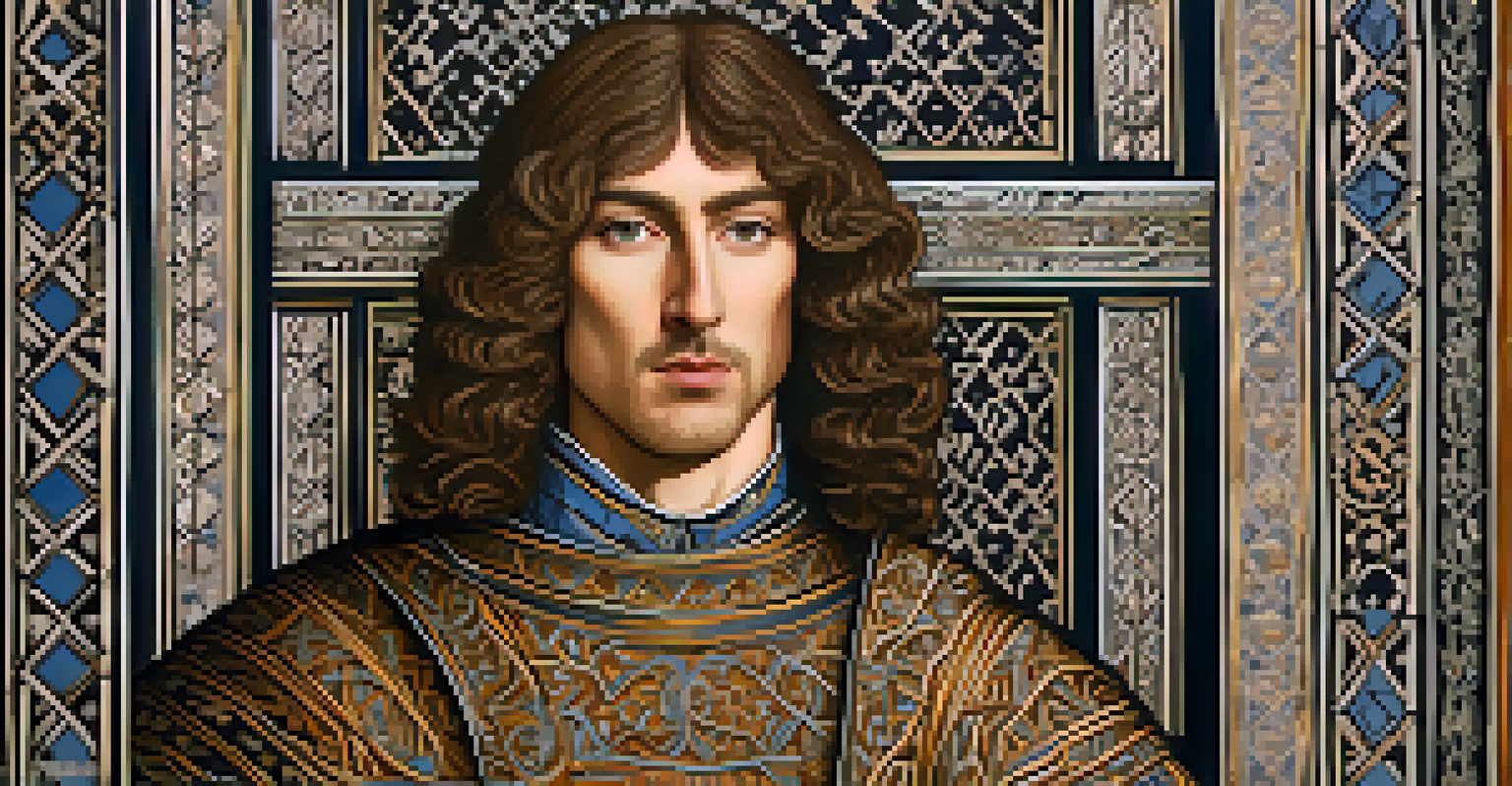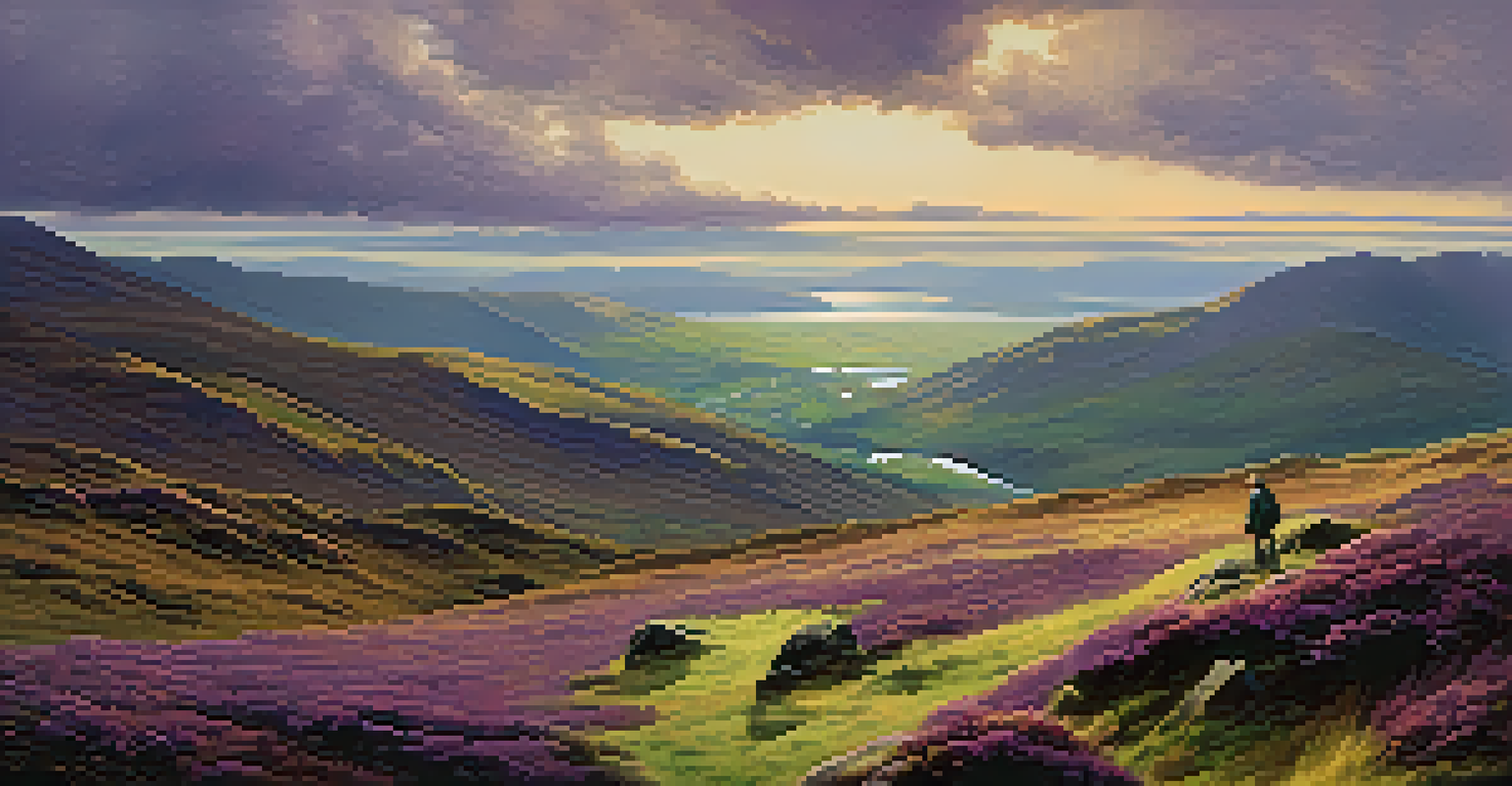How 'Braveheart' Distorts Scottish History for Cinema

The Historical Context of 'Braveheart'
Set against the backdrop of the late 13th century, 'Braveheart' presents a dramatized version of William Wallace's life. The film paints a picture of a united Scotland fighting against English oppression, which simplifies a much more complex reality. In truth, Scotland was divided, with various factions and lords often at odds with each other. This context is crucial to understanding the nuanced nature of the Scottish struggle for independence.
History is written by the victors.
While the film showcases Wallace as a heroic figure, it overlooks the internal conflicts that characterized Scotland during this period. Many Scottish nobles had their own interests and ambitions, complicating the notion of a singular Scottish identity. By ignoring these divisions, 'Braveheart' crafts a narrative that feels more like a fairy tale than a reflection of history.
This oversimplification serves cinematic purposes but does a disservice to the rich tapestry of Scottish history. It leads viewers to believe in a clear-cut battle between good and evil, which can be misleading. Understanding this context helps us appreciate the complexity of historical narratives beyond what is depicted on screen.
Characterization of William Wallace
'Braveheart' portrays William Wallace as a valiant and almost mythical hero, but historical records suggest a more multifaceted individual. The film exaggerates his role, presenting him as the sole leader of the Scottish resistance. In reality, Wallace was one of several key figures, and his influence was limited compared to other leaders like Robert the Bruce.

The film's romanticized depiction of Wallace’s life, including his love story with Murron, is largely fictional. While it adds emotional depth to the narrative, it detracts from the historical accuracy of his motivations and actions. Wallace was driven by a desire for justice and freedom, yet his story is simplified into a tale of personal vengeance in the film.
Oversimplified Scottish History
The film 'Braveheart' simplifies the complex reality of Scotland's historical struggle for independence, presenting a clear-cut narrative that overlooks internal divisions.
This distortion can shape public perception, leading audiences to view historical figures through a lens colored by Hollywood. It raises the question of how much creative license filmmakers should take when representing real-life individuals. The portrayal of Wallace in 'Braveheart' ultimately sacrifices authenticity for drama, leaving viewers with a skewed understanding of his legacy.
The Role of Robert the Bruce
Robert the Bruce, another pivotal figure in Scotland's fight for independence, is depicted in 'Braveheart' as a somewhat unreliable ally to Wallace. The film suggests a rivalry between the two, which is a significant departure from historical accounts. Bruce ultimately became the King of Scots and played a crucial role in the eventual success of Scotland's independence.
The past is never dead. It's not even past.
In reality, Bruce and Wallace shared a common goal, albeit with different methods and timelines. Bruce's complex character is reduced to a mere subplot in the film, which overlooks his strategic importance in the independence movement. By misrepresenting their relationship, 'Braveheart' creates a false narrative of discord where there was collaboration.
This characterization not only undermines Bruce's contributions but also simplifies the larger Scottish struggle for autonomy. The film's portrayal can mislead viewers into thinking that unity was absent among Scottish leaders when, in fact, their alliances were often key to their successes. Understanding the dynamics between these historical figures is essential for a more accurate view of Scotland's past.
The English Perspective in 'Braveheart'
'Braveheart' presents the English as the antagonists in a clear-cut narrative of oppression, but this portrayal lacks nuance. King Edward I, known as 'Longshanks,' is depicted as a ruthless tyrant, which dramatizes the conflict but oversimplifies the historical context. While he certainly played a significant role in the oppression of Scotland, the film fails to capture the complexities of his reign and motivations.
The film overlooks the fact that not all English people supported the crown's actions in Scotland. Many were also affected by the political machinations of the time, and some even sympathized with the Scots' plight. This complexity is lost in the cinematic portrayal that reduces the conflict to a binary of good versus evil.
Distorted Characters and Alliances
William Wallace is portrayed as the sole hero, while the film misrepresents his relationship with Robert the Bruce, undermining the collaborative efforts of Scottish leaders.
By framing the story in such simplistic terms, 'Braveheart' risks fostering animosity and misunderstanding between English and Scottish audiences. It is essential to recognize that historical conflicts often involve a web of relationships and motivations that can't be easily categorized. A more balanced representation could lead to deeper discussions about identity and heritage.
The Artistic License Taken in Cinematic Storytelling
One of the hallmarks of cinematic storytelling is the use of artistic license, allowing filmmakers to craft narratives that resonate with audiences. However, 'Braveheart' often prioritizes drama over historical accuracy, raising questions about the responsibilities of filmmakers when depicting real events. While it's understandable that films aim to engage viewers emotionally, the line between creative storytelling and misinformation can blur.
The film's sweeping battle scenes and poignant moments are undeniably captivating, yet they come at the expense of factual representation. For instance, the iconic battle of Stirling Bridge is portrayed without the actual bridge, which played a crucial role in the Scottish victory. This choice, while visually impressive, misleads viewers about the tactical realities of the conflict.
This blend of history and fiction can create lasting impressions that shape public understanding of events. As audiences, it's crucial to approach historical films with a critical eye, recognizing the difference between entertainment and education. The allure of a good story should not overshadow the importance of historical truth.
Impact on Scottish Identity and Culture
'Braveheart' has had a profound impact on how many perceive Scottish history and identity, often romanticizing the past in ways that can be misleading. The film's portrayal of bravery and sacrifice has resonated with audiences, but it can also create unrealistic expectations about the nation's history. This romanticized view may overshadow the complexities and realities of Scotland's past.
As a result, some aspects of Scottish culture have become intertwined with the film's narrative, leading to a skewed understanding of historical events. This can affect how future generations view their heritage, potentially fostering a sense of nationalism based on misconceptions. The film's legacy raises important questions about how history is taught and represented in popular culture.
Cultural Impact and Misrepresentation
'Braveheart' has significantly shaped perceptions of Scottish identity, often romanticizing the past and creating misconceptions about historical events.
Moreover, this impact extends beyond Scotland, influencing perceptions of Scottish identity worldwide. Viewers may come to associate Scotland solely with the themes presented in 'Braveheart,' rather than engaging with the diverse and rich history of the nation. This simplification can hinder a deeper appreciation of Scotland's true cultural narrative.
The Legacy of 'Braveheart' in Popular Culture
'Braveheart' has solidified its place as a significant cultural touchstone, affecting not just cinema but also how history is discussed. Its iconic scenes and memorable quotes have permeated pop culture, often cited in discussions about freedom and resistance. However, this legacy comes with the weight of historical inaccuracies that continue to shape perceptions.
Many people may reference 'Braveheart' when discussing Scottish history, reinforcing a narrative that may not align with factual accounts. This can perpetuate myths and misunderstandings about the historical events it depicts. As a film, it stands as a testament to the power of storytelling, but as a historical source, it falls short.

The challenge remains for educators and historians to clarify the distinctions between the film's dramatizations and actual events. As the film continues to influence popular culture, it is essential to promote a more nuanced understanding of the past. By doing so, we can appreciate 'Braveheart' as a piece of art while also striving for historical accuracy.